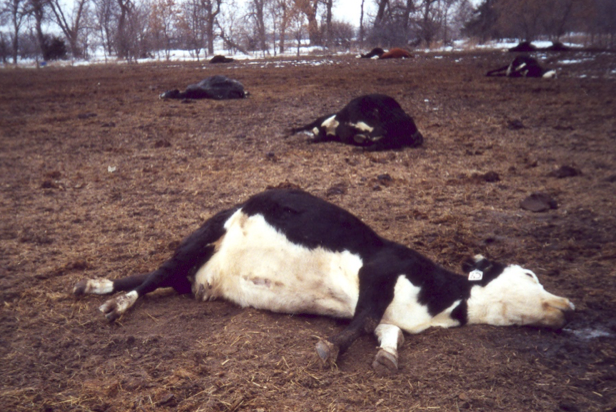Nitrate Poisoning
By Dr. Deon van der Merwe
Nitrate is the most important form of useable nitrogen absorbed from soil by plants. The nitrate uptake rate through the roots is variable through the life cycle of a plant, reaching a maximum around the time when the plant growth rate is at its highest, typically during the summer for most plants. The rapid rate of nitrate uptake by plants during periods of peak growth is normally balanced by the utilization of nitrate in the production of proteins, DNA, and other nitrogen-containing molecules. A critical step in the utilization of nitrate by plants is the reduction of nitrate by an enzyme called nitrate reductase (NR). The activity of this enzyme is not constant, but can be increased or decreased depending on the presence or absence of favorable growing conditions. When conditions are unfavorable for the plant, NR activity can be reduced and nitrate concentrations will then increase in plant tissues because nitrate uptake through the roots may continue for a time even when the plant is not able to utilize the excess nitrate. The excess nitrate in the plant tissues is then available for rapid use when growing conditions improve. It usually takes only a few days of normal growing conditions for nitrate levels to return back to normal. However, if plants are consumed by ruminant livestock during a period of nitrate accumulation, the excess nitrate concentrations may be high enough to cause nitrate poisoning. Also, if plants are cut for hay during such a period the nitrate concentrations will be high in the hay, and will remain at high levels indefinitely.
Several factors play a role in the level of nitrate poisoning risk. Not all plant species are prone to nitrate accumulation, but it is a risk in several crop and weed species. Commonly affected species in our region include sorghum, corn, rape, wheat, lambsquarters, pigweed, ragweed, fireweed, annual sunflower, sweetclover, and others. As a general rule of thumb, plants with a high growth rate potential tend to be associated with a relatively high risk of nitrate accumulation. Drought during the peak growing season, and plants growing in nitrate-rich soils, are the most common environmental causes of nitrate accumulation, but many other factors that reduce plant growth could play a role. Examples include persistent cloud cover, herbicides, and nutrient deficiencies. Another factor that may play a role is nitrate in drinking water. Some sources of drinking water may contain relatively high concentrations of nitrate, and it is the total nitrate ingestion, including feed and water, that determines the potential for nitrate poisoning to occur.

|
|
Cows found dead in the morning after being fed high nitrate sorghum-sudan hay the night before |
When nitrate is consumed by ruminants, microbes in the rumen rapidly transform the nitrate into nitrite, which oxidizes hemoglobin to methemoglobin. Methemoglobin has a poor capacity for carrying oxygen, and the animal becomes oxygen starved. Animals that are not used to nitrate in the diet are more susceptible. Typical signs of nitrate poisoning include exercise intolerance, rapid breathing, collapse and convulsions. Nitrate can lead to rapid death in animals that consumed forage with high nitrate concentrations. In some cases it may lead to death of fetuses and abortions, typically 3-7 days after exposure, even if the mother is able to survive. Horses and other non-ruminant species such as pigs are less susceptible, but poisoning may occur when nitrate exposure levels are extremely high. Treatment is only effective if given quickly after exposure to nitrate, and in many cases animals will die before effective treatment can be given.
Dr. van der Merwe is in the Department of Diagnostic Medicine and Pathobiology.